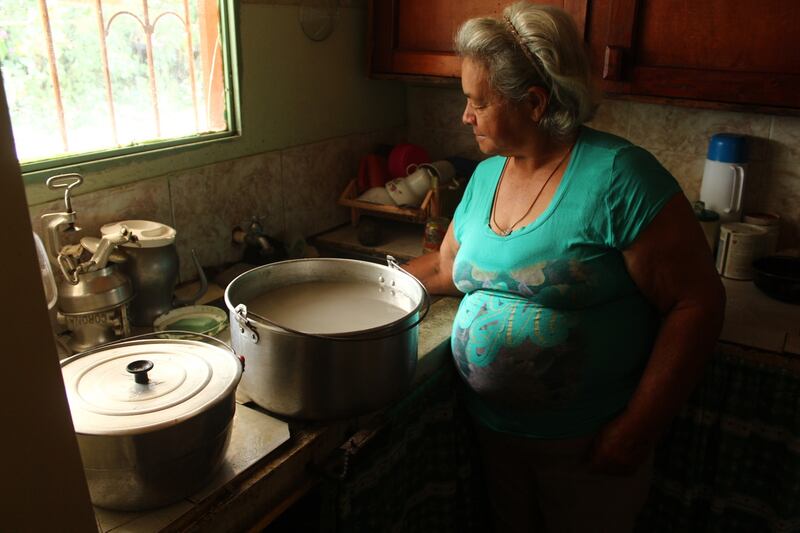A team from Ulster University is leading a project aimed at dealing with one of humanity’s great challenges – access to clean, safe water. According to the World Health Organisation, at least 1.8 billion people globally use a source of drinking water that is contaminated by faeces, nearly 1,000 children die each day due to preventable water and sanitation-related diseases, and by 2025, half of the world’s population will be living in water-stressed areas.
Safewater is a transdisciplinary and transnational research centre working to deliver clean drinking water in underdeveloped areas around the world. Organisations participating in the centre include Ulster University, the University of Medellin in Colombia, the University of Sao Paolo, Brazil, Fundacion Cantaro Azul, an organisation based in Mexico that develops safe water solutions, and the Colombia-based Corporación Centro de Ciencia y Tecnología de Antioquia (Science and Technology Centre of Antioquia).
Waterborne diseases
The centre received a £4.9 million (€5.6 million) grant from the UK Global Challenges Research Fund in 2017. Among its aims are the development of technologies which help to reduce incidence of waterborne diseases, deliver supplies of safe drinking water to communities in developing regions and create a network of experts in low-cost technologies for safe drinking water.
"In the developed world, we take it for granted that our drinking water is safe yet nearly 25 per cent of the global population drink water that is not safe because of contamination that can cause deadly disease," says lead researcher Prof Tony Byrne. "Clean water saves lives and while we know how to make water safe to drink, the cost of doing so may be too high as nearly half the world's population live on less than £2 per day."
One and a half years into the project, the centre now boasts a team of more than 50 professors, researchers, and PhD students working together to develop practical solutions to this critically important issue. “We are developing solutions that that can be deployed in the field with real communities in Colombia and Mexico,” says Prof Byrne. “We hope to move to field trials in early 2020.”
One of the core objectives of the project is to improve health outcomes for children. “We will monitor key indicators such as growth, weight, nutrition, and the incidence of diarrhoea,” he says.

But the problem isn’t a simple one of investing in the provision of sources of clean water. “We have to look at the behavioural aspects and we have a psychology team involved in that. We are taking social, environmental, and economic factors into account. It’s a huge challenge. Many other people are working on it. It’s a question of addressing without having vast amounts of capital for infrastructure. These are rural communities which are very hard to get to; nine-hour drives from the nearest town or city in some cases.”
Monitoring of downstream water quality is also very important. “There have been a lot of investments in things like boreholes and standpipes,” Prof Byrne explains. “People can go and collect water that is safe but then put it in a dirty container. It’s contaminated when it’s transported and stored. This last 100m is a big issue.”
It all comes down to affordability and practicality. Cheap solutions exist but are not necessarily practical. He points to an RCSI project which is focused on solar disinfection. In essence, this involves putting water in a clear plastic bottle and allowing the sun to do the disinfection work. It's more or less free but doesn't deliver large volumes. With an average family requiring about 150 litres of clean water a day, this is not really an overall solution.
Affordable
Moreover, clear water is required for it to work so a prefiltration system is needed. “We are looking at some exciting and affordable filtration technologies,” says Prof Byrne.
The plan is to develop a prototype system for the delivery and storage of water to homes in rural communities in Mexico and Colombia using materials and components which are readily available locally. “We will test the prototype and then look at the system in the field,” he adds. “We will install in a small number of households then move to a large-scale trial. We are planning to have 270 systems installed in the communities.”

The systems will be designed in accordance with local conditions. Prof Byrne points out that there are large price differences between the two countries and that rural communities in Colombia tend to be much better off than their counterparts in Mexico.
Existing technologies such as high energy UVc light disinfection along with low-cost filtration systems will be used to achieve WHO standards of cleanliness. Chlorination will be utilised for certain aspects such as safe storage but not necessarily as an overall solution. “Chlorination is very simple, but it requires access to tablets or the liquid form. There can be issues with dosage control as well.”
“What we want to do is develop a system that meets the needs of most people and see what the health and other benefits are over a period. We will continue to monitor water quality and then look at how to reduce costs further and make the technology available to more communities in other regions and countries.”











